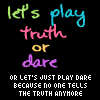by Bobbi DePorter
The perpetual question facing our education system is how to improve students' academic performance on standardized tests, enhance teachers' instructional techniques and increase student achievement overall. What's working and by what evidence?
A recent study, Quantum Learning's Impact on Achievement in Multiple Settings, was completed by William Benn. Benn, an External Evaluator for Program Improvement Schools, approved by the California Department of Education, studied the impact of the Quantum Learning model on 18 schools in four states.
The schools were chosen for their degree of commitment to Quantum Learning. All had implemented Quantum Learning over a number of years with a majority of their staff participating. High implementation and 'buy-in' from staff is a key component that correlates to the success of any method.
New Lexington Elementary School in the El Monte School District in California was one of the schools chosen for the study. New Lexington began conducting the Quantum Learning school wide reform model during the 2001-2002 school year and have continued through 2003. The results of the Academic Performance Index (API) scores from 2001 and 2002 indicate that New Lexington made statistically and educationally significant gains in academic achievement compared to 44 comparison schools. It also showed gains based on SAT-9 results. New Lexington Principal, Karen Smith commented, "Quantum Learning strategies played a key role in raising our students' literacy levels. In addition, I'm seeing a renewed sense of energy and purpose in my teachers' classrooms that truly helps to 'hook' students. When I see students get excited about learning, I get excited too."
In all 18 schools, Benn's study found that the Quantum Learning model demonstrated a consistent pattern of positive impact on student achievement. These outstanding results ranged from statistically and educationally significant gains in reading, mathematics, writing to more comprehensive measures of core academic achievement. Students whom attend schools that use the Quantum Learning model show a pattern of greater achievement than comparison sample students that have not been taught these strategies.
What is the Quantum Learning (QL) model?
Quantum Learning is a comprehensive model that covers both educational theory and immediate classroom implementation. It integrates research-based best practices in education into a unified whole, making content more meaningful and relevant to students' lives.
Quantum learning is about bringing joy to teaching and learning with ever-increasing 'Aha' moments of discovery. It helps teachers to present their content a way that engages and energizes students. This model also integrates learning and life skills, resulting in students who become effective lifelong learners – responsible for their own education.
The FADE model—Foundation, Atmosphere, Design, Environment—creates the context of Quantum Learning. We know when the context is strong, it 'fades' into the background and creates the structure for learning to occur.
Quantum Learning begins with a strong foundation built on the principles of the 8 Keys of Excellence. It holds the beliefs that: All people can learn, people learn differently, and learning is effective when it is joyful, engaging and challenging. The 8 Keys of Excellence include: Integrity, Commitment, Failure Leads to Success, Ownership, Speak with Good Purpose, Flexibility, This Is It!, and Balance. The 8 Keys of Excellence can be integrated into all subjects and grade levels. The 8 Keys are best implemented when parents and community leaders support and reinforce the Keys.
The Quantum Learning framework for student learning is expressed in 5 Tenets of Learning:
Everything Speaks: Everything, from surroundings and tone of voice to distribution of materials, conveys an important message about learning.
Everything is On Purpose: Everything we do has an intended purpose.
Experience Before Label: Students make meaning and transfer new content into long-term memory by connecting to existing schema. Learning is best facilitated when students experience the information in some aspect before they acquire labels for what is being learned.
Acknowledge Every Effort: Acknowledgment of each student's effort encourages learning and experimentation.
If It's Worth Learning, It's Worth Celebrating!: Celebration provides feedback regarding progress and increases positive emotional associations with the learning.
Quantum Learning creates an empowering atmosphere of trust, safety and a sense of belonging. Establishing engaging, focused traditions creates a sense of belonging and safety and is an effective strategy for classroom management, focusing attention and motivating students to increase participation in learning. Each school day begins with a morning routine and purposeful first statement. These routines are designed to immediately focus students and create resourceful learning states.
Quantum Learning Design Frame
The QL Design Frame that drives the presentation and facilitation of content was formulated from many years of research on effective delivery methods and is the structural frame upon which content is designed to ensure student mastery. The elements (that are aligned with Dr. Georgi Lozanov's learning cycle) are:
Enroll—Use teacher moves that capture the interest, curiosity and attention of the students.
Experience—Create or elicit a common experience, or tap into common knowledge to which all learners can relate. Experience before Label creates schema on which to build new content.
Learn & Label—Present, sequence and define the main content. Students learn labels, thinking skills and academic strategies. Students add new content to their existing schema.
Demonstrate—Give students an opportunity to demonstrate and apply their new learning.
Review and Reflect—Use a variety of effective, multi-sensory review strategies and empower students to process their new content through reflection.
Celebration—Acknowledge the learning. It cements the content and adds a sense of completion.
Quantum Learning creates a supportive physical environment that enhances and reinforces learning. Ideal learning environments include proper lighting, purposeful color, positive affirmation posters, plants, props and music. These elements are easy to include in one's classroom, and students enjoy learning more in a comfortable setting.
The key is to create empowering school environments that build engaging and dynamic communities of learning. The results are enhanced teacher capacity and increased student achievement.
Thursday, June 07, 2007
The Impact of Quantum Learning
Subscribe to:
Post Comments (Atom)






0 comments:
Post a Comment